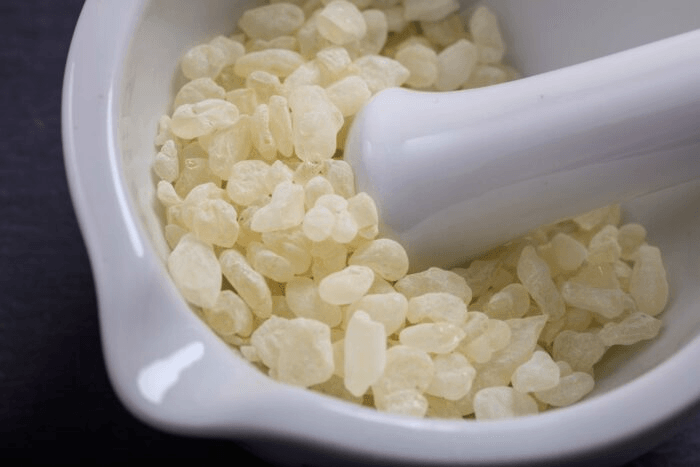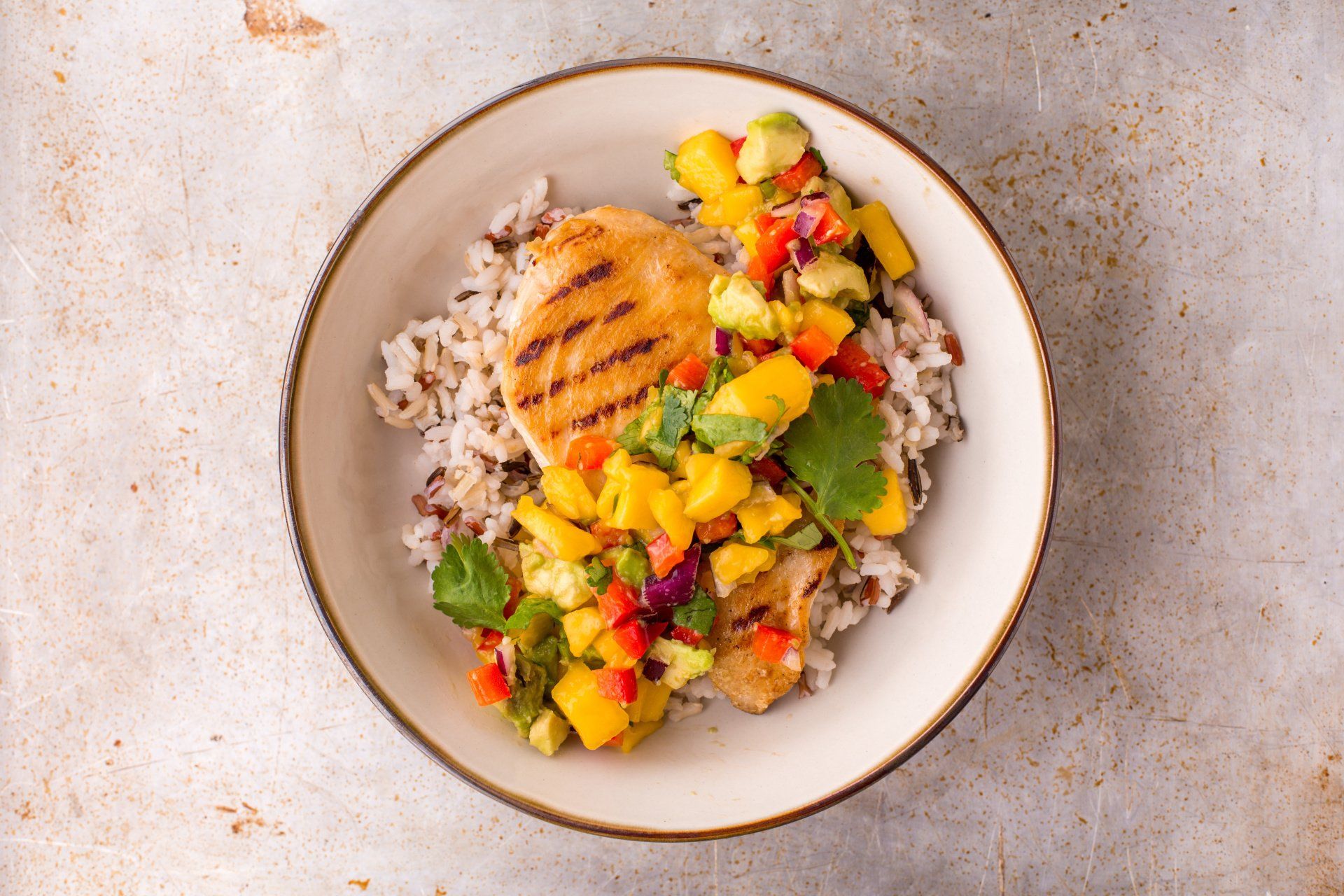
Ingredients (use organic where possible):
- 4 thin boneless skinless chicken breasts
- 2 teaspoons olive oil
- 2 teaspoons chili powder
- Himalaya pink salt to taste
- 1 cup diced mango
- 1 cup diced avocado
- Juice of 1 lime
- 1/2 cup minced red bell pepper
- 1/4 cup chopped cilantro
Preparation:

You have been walking since taking your first steps as a young child. It is such a basic and natural part of what you do that maybe you haven’t considered the numerous benefits of incorporating a simple 30-minute walk into your daily routine. A good brisk walk not only positively impacts you physically but has a metal and emotional health component as well. The “technology takeover” has resulted in a more sedentary lifestyle for most of us…working at the computer, replying to texts, and streaming movies on our big screen tv. Given that, planning for time to walk 30 minutes every day can balance out the effects of all that time we spend sitting.
Walking not only fits everyone’s budget, requires no expensive sports equipment, and has not been shut down due to COVID like gyms and yoga classes, but it can also afford a wonderful social aspect as well, when taking a stroll and catching up with friends real time. Almost a guilty pleasure by today’s standards, particularly now with social distancing. If you think walking is a waste of time, think again. Did you know, there are no less than 30 benefits associated with daily walks?! Here are the first 10…1. A Healthy Heart
Your heart is a muscle, and just like all the other muscles in our body, it needs a workout to enhance your health. Cardio exercise is quantified as physical activity that increases your heart rate; which is the number of times your heart beats per minute. Your resting heart rate also known as your pulse rate, will thus be lower than your heart rate during exercise, as your heart pumps faster to send oxygen to all those working muscles.
Therefore, the best way to exercise your heart is by engaging in activities that increase your heart rate. Regular cardio exercise will strengthen your heart muscle. The stronger your heart, the more efficient it will be in delivering blood and oxygen throughout your body.
2. Maintaining Joint Mobility
Stiff joints causing discomfort while in motion, oftentimes leads to immobility, in a logical pain avoidance strategy. This is turn can lead to weight gain which only serves to exacerbate joint pain further, not to mention snowball into a myriad of other health issues. Having stiff joints does not have to preclude you from enjoying daily walks. However, if you have suffered with joint stiffness or pain, particularly in the knees and hips, it is always best to consult your physician prior to increasing physical activity to rule out any issues that may need to be addressed first. Doctors often recommend walking because it is a low-impact cardio workout, compared to running, a high-impact form of exercise, the latter can only serve to aggravate joint discomfort. If physical therapy is required to diminish joint tenderness, walking is often incorporated into the program for its known relief in minimizing chronic pain.
3. Strengthening Bones
Aging can bring with it, a decrease
in bone density, which is the amount of bone mineral present in your bones. Loss
of bone density leads a condition known as osteopenia and then to osteoporosis,
a more severe form of bone loss. Exercise helps to retain your bone mass. For
those who have been more sedentary, the best way to start is by one step at a
time…walking.
Stronger, more dense bones lower the chance of fractures and breaks, a complication of osteoporosis. Regular exercise not only improves bone density but also overall fitness and flexibility, which also serves to reduce injury.
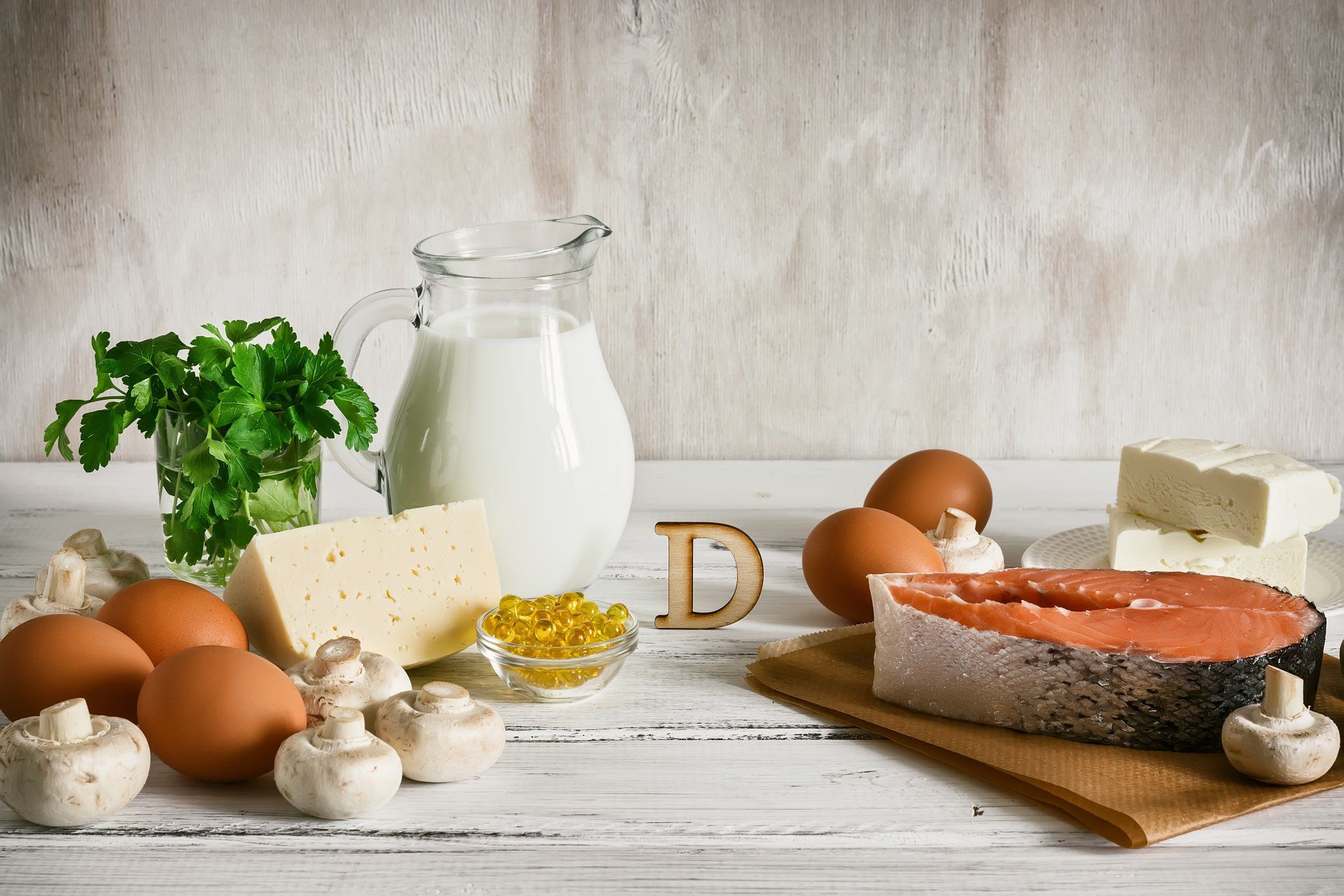
How does Vitamin D promote healthy bones?
The bone builder mineral, Calcium, requires Vitamin D for proper absorption. Vitamin D assists the body in Calcium absorption and maintaining appropriate Calcium levels in the blood. Insufficient levels of Vitamin D cause Calcium to be released from the bones to help maintain blood calcium levels, which contribute to soft, brittle bones.
Boosting immune health...a timely C19 strategy
Our immune system is continually defending our body from foreign microscopic invaders. Research shows that low levels of vitamin D are associated with not only an increased susceptibility to infection but also reveals a link to multiple autoimmune diseases, including lupus, multiple sclerosis, and rheumatoid arthritis. Likewise it can be said that improving Vitamin D status, though supplementation, diet, and sun exposure, may have protective effects against autoimmune disease. How exactly does Vitamin D support our immune system? By stimulating immune cells, such as macrophages and T-cells, that defend the body against harmful pathogens. Several studies found a correlation between optimal Vitamin D levels and a decreased risk of upper respiratory tract infections, due to the protective effect of an increased expression of anti-microbial peptides in the lungs.
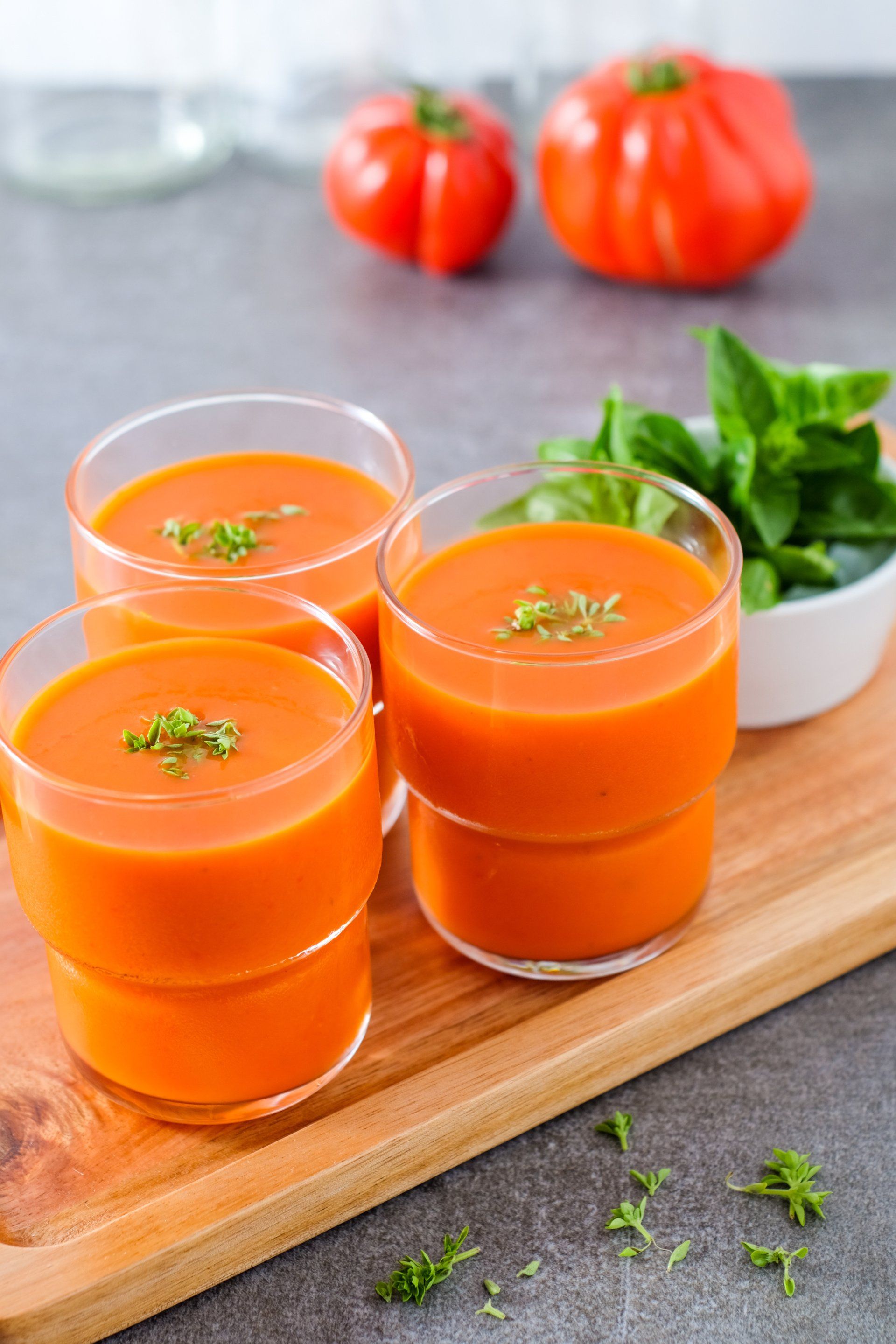
Makes 8 to 12 servings
Ingredients (Use organic where possible):
- 2 pounds ripe red tomatoes, cored and roughly cut into chunks
- 1 Italian frying (cubanelle) pepper or another long, light green pepper (Anaheim) cored, seeded and roughly cut into chunks
- 1 cucumber, 8 inches long, peeled and roughly cut into chunks
- 1 small mild onion (white or red), peeled and roughly cut into chunks
- 1 clove garlic
- 2 teaspoons sherry vinegar, more to taste
- Pink Himalayan Salt
- ½ cup extra-virgin olive oil, more to taste, plus more for drizzling
Preparation:
- Combine tomatoes, pepper, cucumber, onion and garlic in a blender or, if using a hand blender, in a deep bowl. (If necessary, work in batches.) Blend at high speed until very smooth, at least 2 minutes, pausing occasionally to scrape down the sides with a rubber spatula.
- With the motor running, add the vinegar and 2 teaspoons salt. Slowly drizzle in the olive oil. The mixture will turn bright orange or dark pink and become smooth and emulsified, like a salad dressing. If it still seems watery, drizzle in more olive oil until texture is creamy.
- Strain the mixture through a strainer or a food mill, pushing all the liquid through with a spatula or the back of a ladle. Discard the solids. Transfer to a large pitcher (preferably glass) and chill until very cold, at least 6 hours or overnight.
- Before serving, adjust the seasonings with salt and vinegar. If soup is very thick, stir in a few tablespoons ice water. Serve in glasses, over ice if desired, or in a bowl. A few drops of olive oil on top are a nice touch.
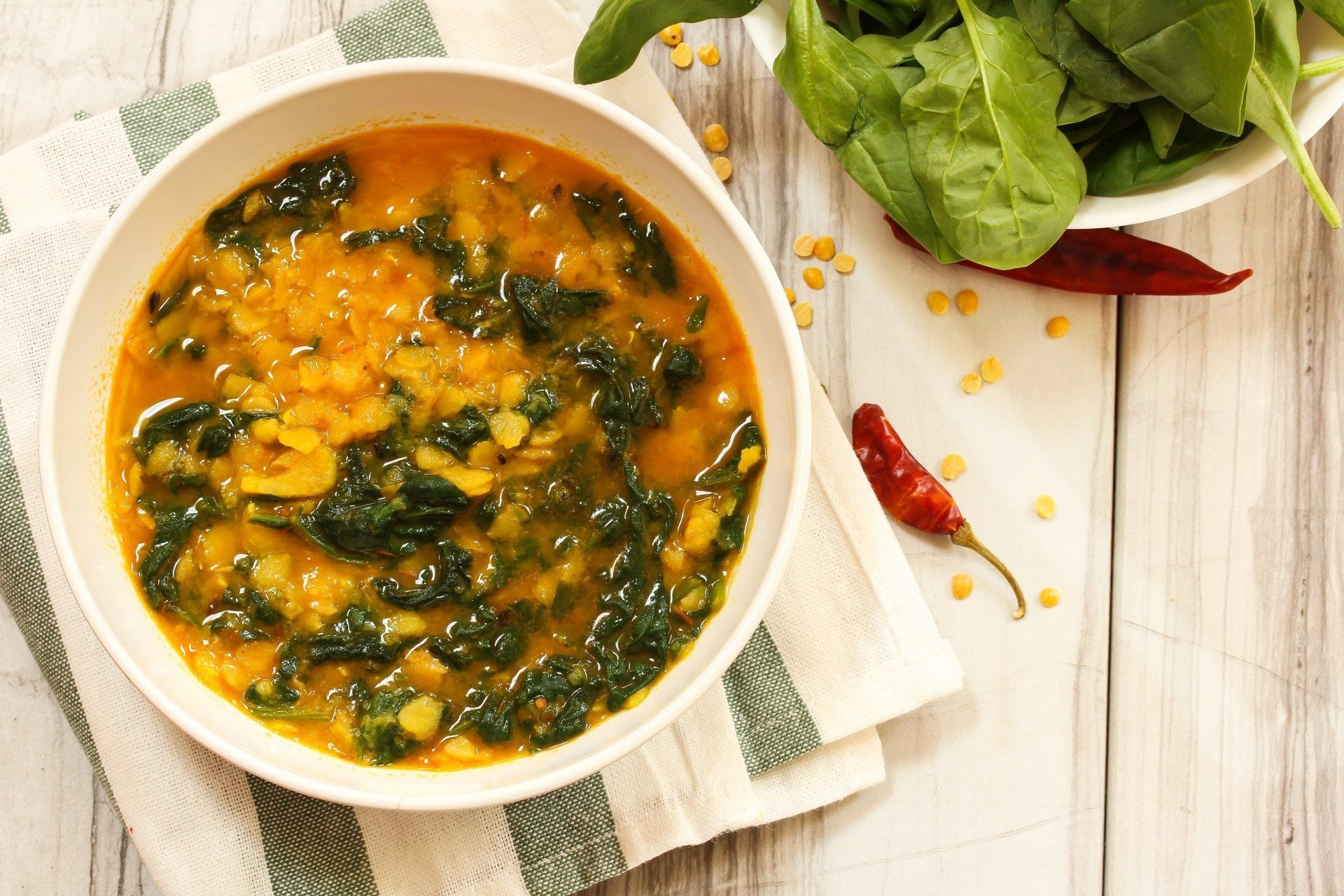
Ingredients (use Organic where possible):
1 T coconut oil
1 medium yellow onion, diced
½ - 1 t dried chili flakes
½ t ground coriander
½ t ground cumin
½ t ground turmeric
2-inch piece fresh ginger, peeled and minced
3 garlic cloves, peeled and minced
Himalayan pink salt and ground black pepper, to taste
1 ½ lbs (2 medium) sweet potatoes, peeled and diced into 1-inch pieces
½ cup brown lentils, picked over
4 cups vegetable or chicken stock
13.5 oz can full fat coconut milk
1 small bunch of kale, stems removed & leaves chopped (about 4 cups chopped & lightly packed kale)
Garnish options:
chopped cilantro
extra chili flakes
lime wedges
Directions:
Heat a large, heavy-bottomed soup pot over medium heat. Add the coconut oil to the pot and let it melt. Add the onions to the pot and stir. Saute the onions, stirring occasionally, until translucent and quite soft, about 5 minutes. Add the chili flakes, coriander, cumin, and turmeric. Saute spices until very fragrant, about 1 minute. Add the ginger and garlic to the pot and cook for another minute. Add a pinch of salt and pepper.
Add the sweet potatoes to the pot and stir to coat in the spices. Add the lentils to the pot and stir once more. Season everything liberally with salt and pepper. Add the vegetable stock and stir, scraping up any browned bits on the bottom of the pot. Place the lid on top of the pot and bring to a boil.
Once the stew is boiling, lower the heat to a simmer and set the lid slightly askew on top of the pot so that there’s a couple inches available for steam to escape. Simmer until the sweet potatoes are almost falling apart and the lentils are tender, about 30 minutes. The liquid should also be reduced by almost a third.
Add the coconut milk and kale to the pot and stir. Place the lid on top and continue to simmer the stew until the kale is wilted and bright green, about 3-4 minutes. Season the sweet potato and coconut milk stew again with salt and pepper. Bring the stew back up to a strong simmer and check for seasoning. Adjust with more salt, pepper, chili etc. if necessary.
Serve the stew hot with desired garnish.
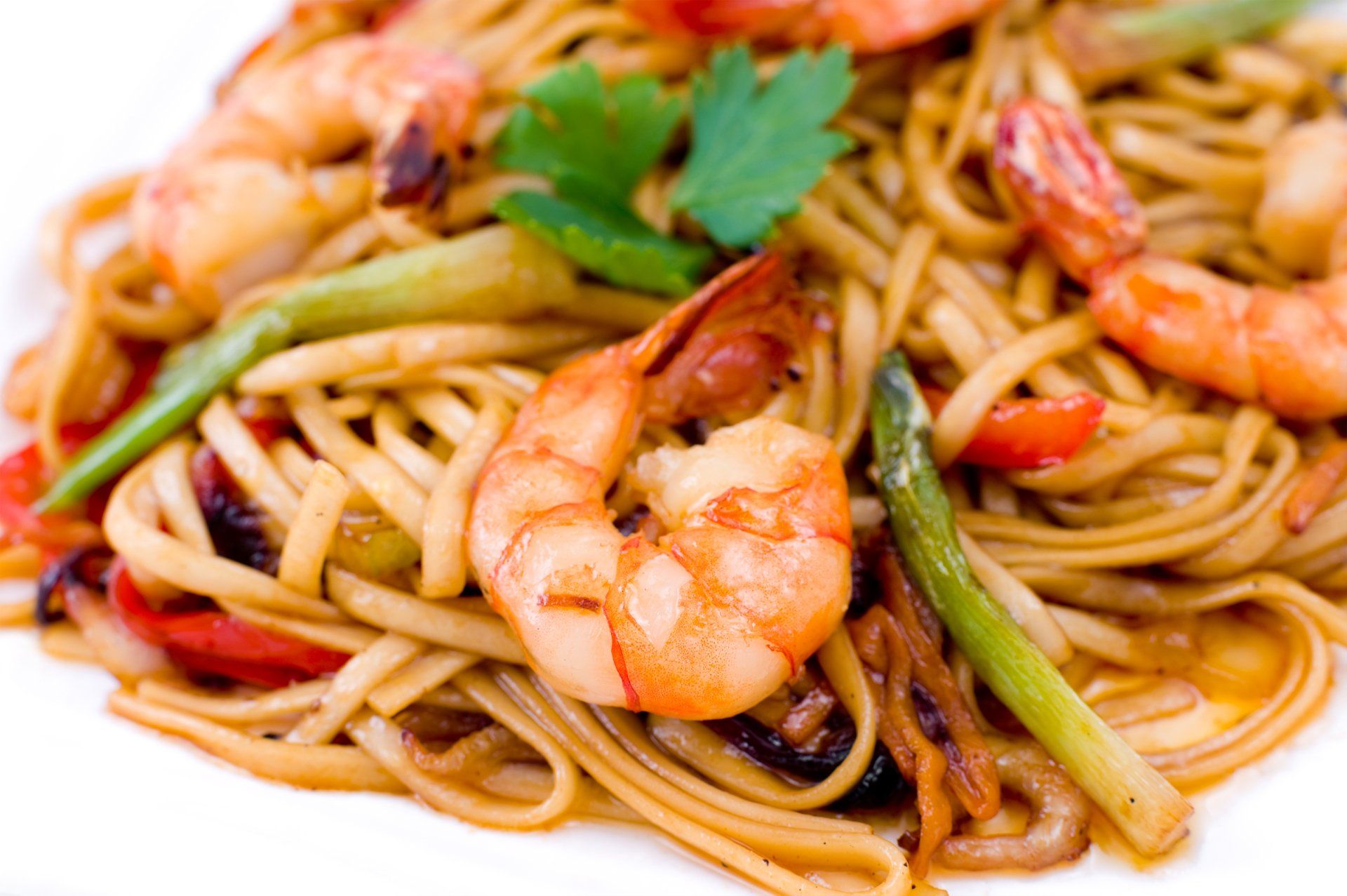

Ingredients
(Use organic where possible)
- 4 cups full-fat coconut milk
- 3 Tb honey
- 1 tsp vanilla extract
- 1 tsp ground turmeric
- ½ tsp ground cinnamon
- ½ tsp ground ginger
- ½ cup chia seeds
Tasty Toppings and Garnishes (Optional)
- ½ cup organic yogurt (coconut recommended!)
- 1 cup organic fresh mixed berries
- ¼ cup organic toasted coconut chips
- ⅛ cup organic semi-sweet chocolate shavings or chips
Preparation Instructions
- Combine the coconut milk, honey, vanilla extract, turmeric, cinnamon, and ground ginger together in a mixing bowl.
- Stir well to combine completely, until you have a smooth and vibrant yellow mixture.
- Add the chia seeds to the main mixture and mix evenly. Set aside for 5 minutes to allow seeds to absorb moisture and thicken the pudding.
- Stir once more before covering the bowl and transferring it to the refrigerator for at least 6 hours or overnight.
- Once chilled, divide the finished pudding evenly between 2-4 serving containers or glasses, depending on the desired serving size.
- For personalization and extra delicious nutrition, top with a dollop of your favorite yogurt and fresh berries. For an extra touch of sweetness, sprinkle with toasted coconut chips or semi-sweet chocolate!
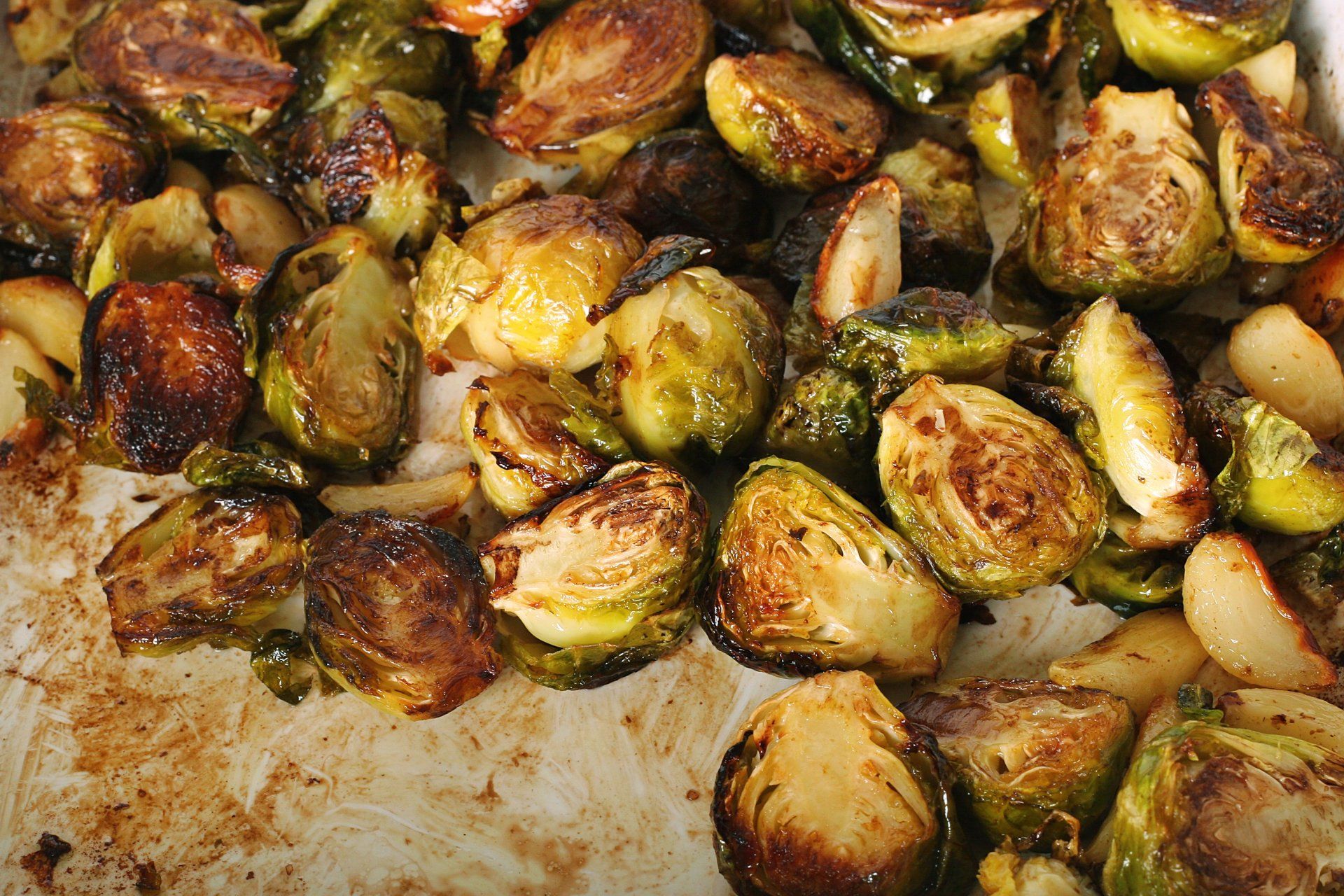
Ingredients:
1 1/2 pounds Organic Brussel Sprouts
3 tablespoons Extra Virgin olive oil
Drizzle with Organic Extra Virgin olive oil
Drizzle with Organic Maple Syrup
Himalayan Pink Salt and freshly ground black pepper to taste
Directions
- Preheat oven to 400 degrees F.
- Cut off the brown ends of the Brussel Sprouts and pull off any yellow outer leaves. Toss Brussel Sprouts in a bowl with the olive oil, maple syrup, salt and pepper. Pour onto a sheet pan and roast for 35 to 40 minutes, until crisp on the outside and tender on the inside. Shake the pan from time to time to brown the sprouts evenly. Serve immediately.

Ingredients (use organic where possible):
- 4 thin boneless skinless chicken breasts
- 2 teaspoons olive oil
- 2 teaspoons chili powder
- Himalaya pink salt to taste
- 1 cup diced mango
- 1 cup diced avocado
- Juice of 1 lime
- 1/2 cup minced red bell pepper
- 1/4 cup chopped cilantro
Preparation:

You have been walking since taking your first steps as a young child. It is such a basic and natural part of what you do that maybe you haven’t considered the numerous benefits of incorporating a simple 30-minute walk into your daily routine. A good brisk walk not only positively impacts you physically but has a metal and emotional health component as well. The “technology takeover” has resulted in a more sedentary lifestyle for most of us…working at the computer, replying to texts, and streaming movies on our big screen tv. Given that, planning for time to walk 30 minutes every day can balance out the effects of all that time we spend sitting.
Walking not only fits everyone’s budget, requires no expensive sports equipment, and has not been shut down due to COVID like gyms and yoga classes, but it can also afford a wonderful social aspect as well, when taking a stroll and catching up with friends real time. Almost a guilty pleasure by today’s standards, particularly now with social distancing. If you think walking is a waste of time, think again. Did you know, there are no less than 30 benefits associated with daily walks?! Here are the first 10…1. A Healthy Heart
Your heart is a muscle, and just like all the other muscles in our body, it needs a workout to enhance your health. Cardio exercise is quantified as physical activity that increases your heart rate; which is the number of times your heart beats per minute. Your resting heart rate also known as your pulse rate, will thus be lower than your heart rate during exercise, as your heart pumps faster to send oxygen to all those working muscles.
Therefore, the best way to exercise your heart is by engaging in activities that increase your heart rate. Regular cardio exercise will strengthen your heart muscle. The stronger your heart, the more efficient it will be in delivering blood and oxygen throughout your body.
2. Maintaining Joint Mobility
Stiff joints causing discomfort while in motion, oftentimes leads to immobility, in a logical pain avoidance strategy. This is turn can lead to weight gain which only serves to exacerbate joint pain further, not to mention snowball into a myriad of other health issues. Having stiff joints does not have to preclude you from enjoying daily walks. However, if you have suffered with joint stiffness or pain, particularly in the knees and hips, it is always best to consult your physician prior to increasing physical activity to rule out any issues that may need to be addressed first. Doctors often recommend walking because it is a low-impact cardio workout, compared to running, a high-impact form of exercise, the latter can only serve to aggravate joint discomfort. If physical therapy is required to diminish joint tenderness, walking is often incorporated into the program for its known relief in minimizing chronic pain.
3. Strengthening Bones
Aging can bring with it, a decrease
in bone density, which is the amount of bone mineral present in your bones. Loss
of bone density leads a condition known as osteopenia and then to osteoporosis,
a more severe form of bone loss. Exercise helps to retain your bone mass. For
those who have been more sedentary, the best way to start is by one step at a
time…walking.
Stronger, more dense bones lower the chance of fractures and breaks, a complication of osteoporosis. Regular exercise not only improves bone density but also overall fitness and flexibility, which also serves to reduce injury.

How does Vitamin D promote healthy bones?
The bone builder mineral, Calcium, requires Vitamin D for proper absorption. Vitamin D assists the body in Calcium absorption and maintaining appropriate Calcium levels in the blood. Insufficient levels of Vitamin D cause Calcium to be released from the bones to help maintain blood calcium levels, which contribute to soft, brittle bones.
Boosting immune health...a timely C19 strategy
Our immune system is continually defending our body from foreign microscopic invaders. Research shows that low levels of vitamin D are associated with not only an increased susceptibility to infection but also reveals a link to multiple autoimmune diseases, including lupus, multiple sclerosis, and rheumatoid arthritis. Likewise it can be said that improving Vitamin D status, though supplementation, diet, and sun exposure, may have protective effects against autoimmune disease. How exactly does Vitamin D support our immune system? By stimulating immune cells, such as macrophages and T-cells, that defend the body against harmful pathogens. Several studies found a correlation between optimal Vitamin D levels and a decreased risk of upper respiratory tract infections, due to the protective effect of an increased expression of anti-microbial peptides in the lungs.

